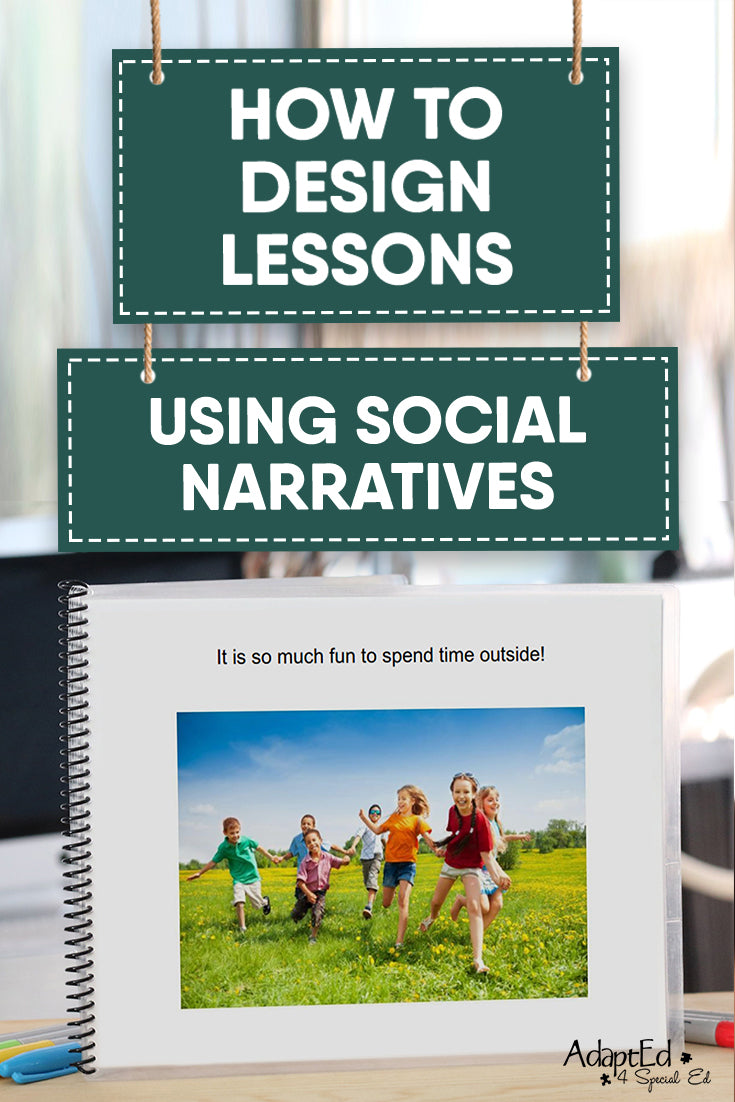One of the largest hurdles of education efforts has always been bridging the gap between the ability to do and the ability to instruct. It takes an additional magnitude of effort and skill to impart information. Nowhere is this gap more clearly on display then when dealing with ASD students.
One of the chief frustrations of parents is an inability to convey what seems like simple skills. That's where social narratives come in. These teaching tools help bridge the gap between what you know and what your student is trying to learn.
The past year has shown that even common educational socialization only works through constant reinforcement. Numerous parents and schools now see socialization troubles hitting the 'mainstream'.
How do social narrative work and how can you make your own?
Using Social Narratives
The purpose of a social narrative is to take a purely fictional or hypothetical situation and concretize it for a more complete understanding. They lay bare the underbelly of a situation to reveal the individual components that go into the sometimes momentary exchanges of information and decision making that social actions pivot upon.
Multiple studies lend credence to the efficacy of these teaching tools.
Narrative Breakdown
Social narratives encapsulate appropriate uses of social skills within social stories. They slow down the process and breakdown each step so that it can not only be taught but also modulated for areas of confusion.
Typically a narrative will contain several of the following components:
- An outline of a situation
- Descriptions of the situation and people involved
- Thoughts, feelings, statements, and actions of the ASD individual
- Thoughts, feelings, statements, and actions of others
- Appropriate responses and behaviors with descriptive aids
- Reasoning and examples behind appropriate behaviors/responses
- Benefits of behaviors/responses to the ASD individual
How many details are incorporated and the complexity of the scenarios can be customized to the ASD individual.
Not only do these narratives provide a robust set of practices, but they also keep the ASD individual at the center so that they can see their effects on the surrounding world more acutely.
Getting started with social narratives, it can be handy to look for prepared materials and libraries that have been developed. As you become more familiar with them, creating your own becomes easier and leads to greater insights for your autistic students.
Creating Narratives
When building your own narratives, or selecting a pre-built one, it's important to focus on one goal or skill at a time. Even when dealing with situations that include increased complexity you want to have the ability to break down the situations as granularly as possible.
Cues
Start by establishing the types of cues needed for a particular student. Do they work more visually? More with auditory or written cues?
Building a library of sounds and images helps bring robust comprehension into a lesson.
Framing
A narrative works when it is about positive attitudes and outcomes. You want to highlight the benefits and what happens when things go right over consequences and issues when things go wrong.
Establish and describe (with cues) the appropriate behavior. Reinforce this with an explanation of why the behavior is appropriate.
For maximum effect in special education circumstances, you want to include the student personally in the story. This is not about how someone else should act or behave but about them personally. This both drives home their agency in the behavior but keeps them interested in the story itself.
Repetition and Permutations
For a narrative to be effective, it needs to be delivered more than once and needs to be practiced step by step multiple times.
Modifications to the situation should be kept to a minimum. You don't want the student to become bored but you also don't want to confuse them by changing too many variables. Multiple scenarios that deal with the same behaviors make sense to craft but you want the overlap to be very high to avoid confusion and frustration.
Teaching Narratives
Social narratives work best when they are used as primers for real-world interactions. As a practice before a situation that will call upon the behavior, they give the student a space to work through the behavior and to learn without the pressures of multiple agents and judgments.
After reading through a narrative a few times, bridge the gap between the page and the real world with some role-play. Act out the components of the narrative and give the student time to enact the behaviors they just learned.
Customizing
Narratives work best when they have a high degree of verisimilitude with reality. Even though a student may have a far greater interest in animals than people, using anthropomorphic animals in visual leads to a disconnect. yes, you want to customize a narrative to appeal to a student but not at the cost of muddying the situations that can be encountered.
If a student runs into a problem during their day, create a narrative around that. Walk through the situation step by step with a storyboard or simple canvas approach.
This is where having a robust library of cues comes in handy. Remember to stay focused on positive outcomes and appropriate behaviors. Don't get bogged down with what-ifs and consequences from punishment or discipline.
Aim for affirmation and reinforce how the student will feel when they act in the situation. This centering keeps the lesson relevant and prevents othering.
When possible, get visual aids about the real people in your student's life. Using the likenesses of people that they encounter each day (with their names) leads to more concrete practice. Even when creating a narrative about a new situation in a new place, familiarity helps with involvement.
Educate with Heart
One of the most important outcomes of using social narratives is providing a way for a student to connect who they feel to actions. Rather than be confused or confusing, they develop tools that let you meet on a common page and they can build a narrative with you that explains their perspective.
Education and socialization are important and go hand-in-hand. Our shared goal is to make room for progress in every child's life.



